Insights from a novel model of slow-transit constipation generated by partial outlet obstruction in the murine large intestine
- PMID: 22961801
- PMCID: PMC3517665
- DOI: 10.1152/ajpgi.00238.2012
Insights from a novel model of slow-transit constipation generated by partial outlet obstruction in the murine large intestine
Abstract
The mechanisms underlying slow-transit constipation (STC) are unclear. In 50% of patients with STC, some form of outlet obstruction has been reported; also an elongated colon has been linked to patients with STC. Our aims were 1) to develop a murine model of STC induced by partial outlet obstruction and 2) to determine whether this leads to colonic elongation and, consequently, activation of the inhibitory "occult reflex," which may contribute to STC in humans. Using a purse-string suture, we physically reduced the maximal anal sphincter opening in C57BL/6 mice. After 4 days, the mice were euthanized (acutely obstructed), the suture was removed (relieved), or the suture was removed and replaced repeatedly (chronically obstructed, over 24-31 days). In partially obstructed mice, we observed increased cyclooxygenase (COX)-2 levels in muscularis and mucosa, an elongated impacted large bowel, slowed transit, nonpropagating colonic migrating motor complexes (CMMCs), a lack of mucosal reflexes, a depolarized circular muscle with slow-wave activity due to a lack of spontaneous inhibitory junction potentials, muscle hypertrophy, and CMMCs in mucosa-free preparations. Elongation of the empty obstructed colon produced a pronounced occult reflex. Removal of the obstruction or addition of a COX-2 antagonist (in vitro and in vivo) restored membrane potential, spontaneous inhibitory junction potentials, CMMC propagation, and mucosal reflexes. We conclude that partial outlet obstruction increases COX-2 leading to a hyperexcitable colon. This hyperexcitability is largely due to suppression of only descending inhibitory nerve pathways by prostaglandins. The upregulation of motility is suppressed by the occult reflex activated by colonic elongation.
Figures
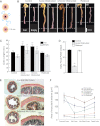

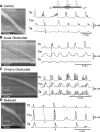
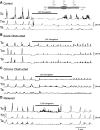

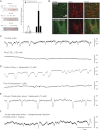
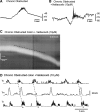

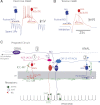
Similar articles
-
Colonic elongation inhibits pellet propulsion and migrating motor complexes in the murine large bowel.J Physiol. 2010 Aug 1;588(Pt 15):2919-34. doi: 10.1113/jphysiol.2010.191445. Epub 2010 Jun 14. J Physiol. 2010. PMID: 20547675 Free PMC article.
-
Critical role of 5-HT1A, 5-HT3, and 5-HT7 receptor subtypes in the initiation, generation, and propagation of the murine colonic migrating motor complex.Am J Physiol Gastrointest Liver Physiol. 2010 Jul;299(1):G144-57. doi: 10.1152/ajpgi.00496.2009. Epub 2010 Apr 22. Am J Physiol Gastrointest Liver Physiol. 2010. PMID: 20413719 Free PMC article.
-
Calcium activity in different classes of myenteric neurons underlying the migrating motor complex in the murine colon.J Physiol. 2010 Feb 1;588(Pt 3):399-421. doi: 10.1113/jphysiol.2009.181172. Epub 2009 Nov 30. J Physiol. 2010. PMID: 19948652 Free PMC article.
-
Chronic constipation: lessons from animal studies.Best Pract Res Clin Gastroenterol. 2011 Feb;25(1):59-71. doi: 10.1016/j.bpg.2010.12.003. Best Pract Res Clin Gastroenterol. 2011. PMID: 21382579 Review.
-
Upper gut dysmotility in slow-transit constipation: is it evidence for a pan-enteric neurological deficit in severe slow transit constipation?Eur J Gastroenterol Hepatol. 1999 Jul;11(7):693-6. doi: 10.1097/00042737-199907000-00001. Eur J Gastroenterol Hepatol. 1999. PMID: 10445784 Review.
Cited by
-
Enteric neuronal Piezo1 maintains mechanical and immunological homeostasis by sensing force.Cell. 2025 May 1;188(9):2417-2432.e19. doi: 10.1016/j.cell.2025.02.031. Epub 2025 Mar 24. Cell. 2025. PMID: 40132579
-
GABA-producing Bifidobacterium dentium modulates visceral sensitivity in the intestine.Neurogastroenterol Motil. 2017 Jan;29(1):e12904. doi: 10.1111/nmo.12904. Epub 2016 Jul 25. Neurogastroenterol Motil. 2017. PMID: 27458085 Free PMC article.
-
A model of the enteric neural circuitry underlying the generation of rhythmic motor patterns in the colon: the role of serotonin.Am J Physiol Gastrointest Liver Physiol. 2017 Jan 1;312(1):G1-G14. doi: 10.1152/ajpgi.00337.2016. Epub 2016 Oct 27. Am J Physiol Gastrointest Liver Physiol. 2017. PMID: 27789457 Free PMC article. Review.
-
Irritable bowel syndrome evaluation using computed tomography colonography.World J Gastroenterol. 2016 Nov 14;22(42):9394-9399. doi: 10.3748/wjg.v22.i42.9394. World J Gastroenterol. 2016. PMID: 27895427 Free PMC article.
-
Important role of mucosal serotonin in colonic propulsion and peristaltic reflexes: in vitro analyses in mice lacking tryptophan hydroxylase 1.J Physiol. 2013 Dec 1;591(23):5939-57. doi: 10.1113/jphysiol.2013.256230. Epub 2013 Oct 14. J Physiol. 2013. PMID: 24127620 Free PMC article.
References
Publication types
MeSH terms
Substances
Grants and funding
LinkOut - more resources
Full Text Sources
Medical
Research Materials
Miscellaneous

